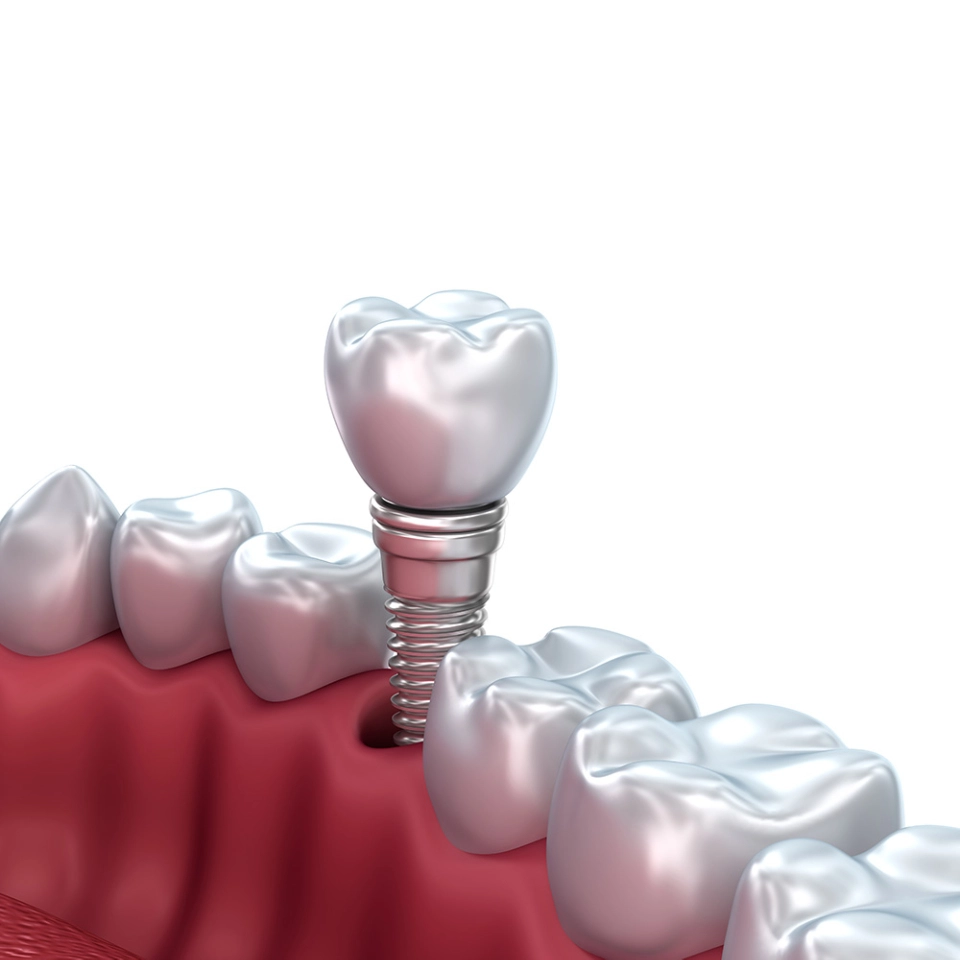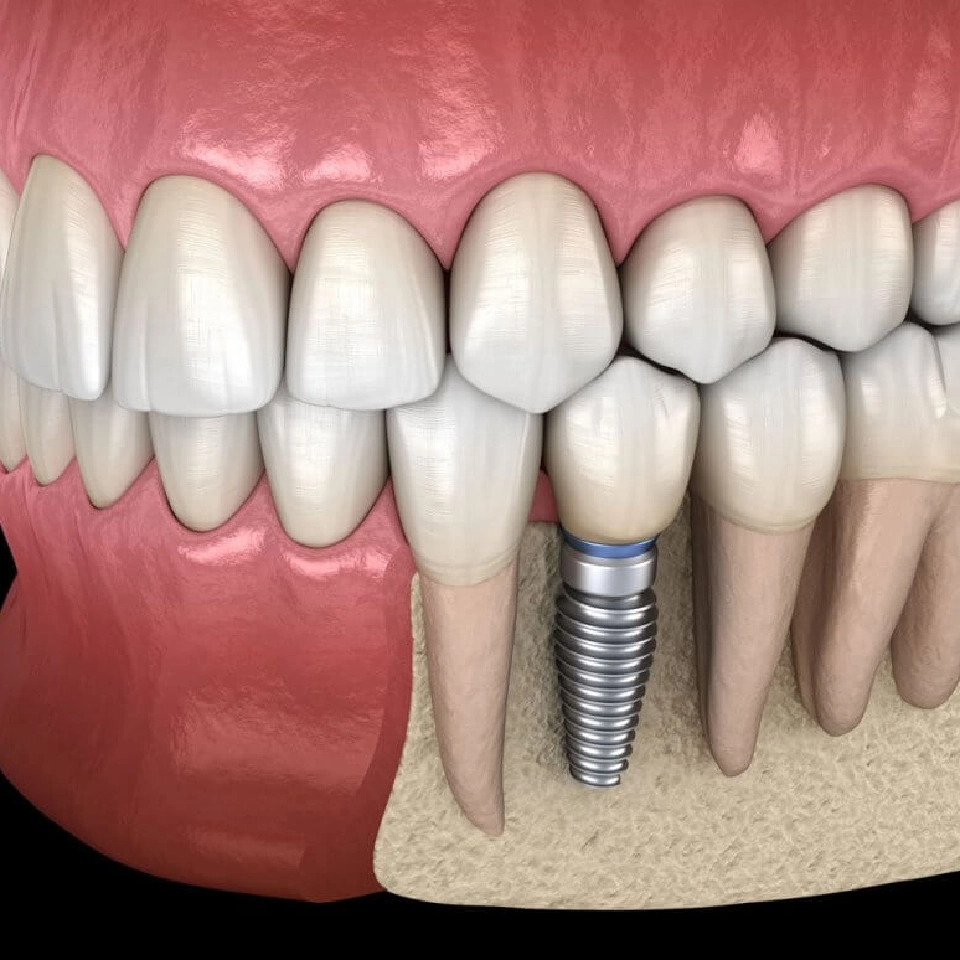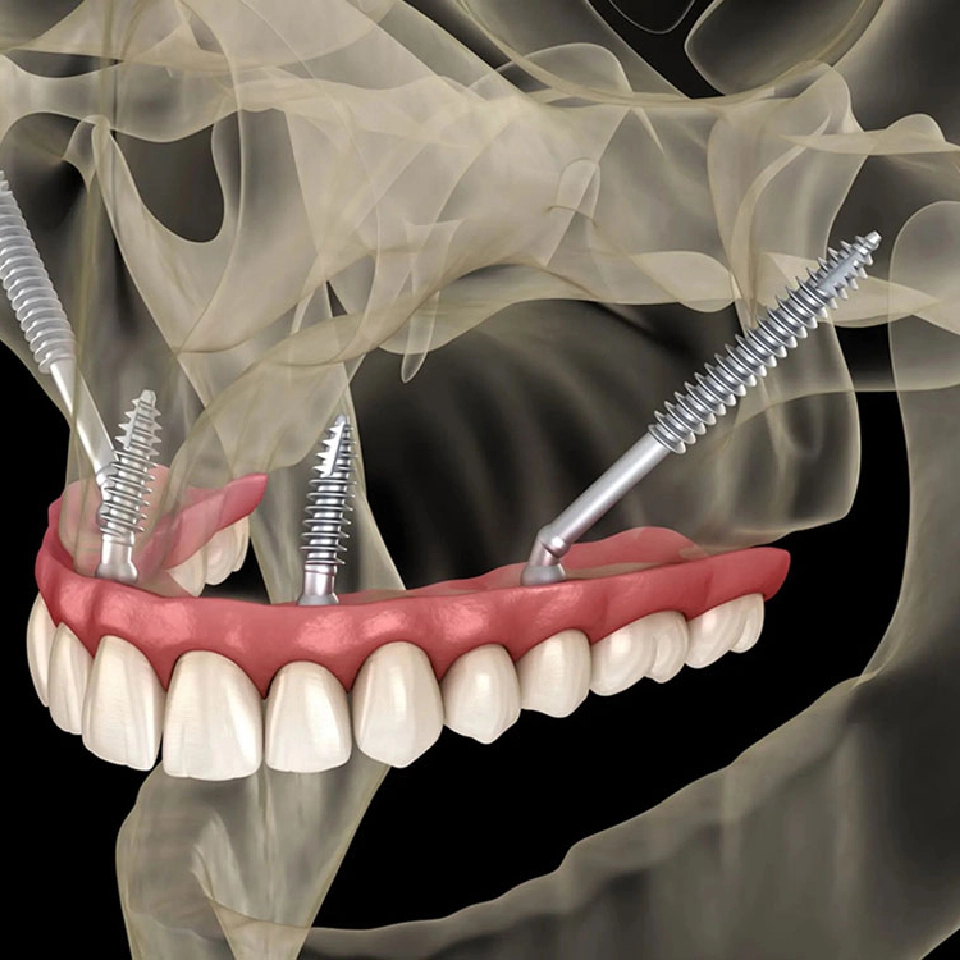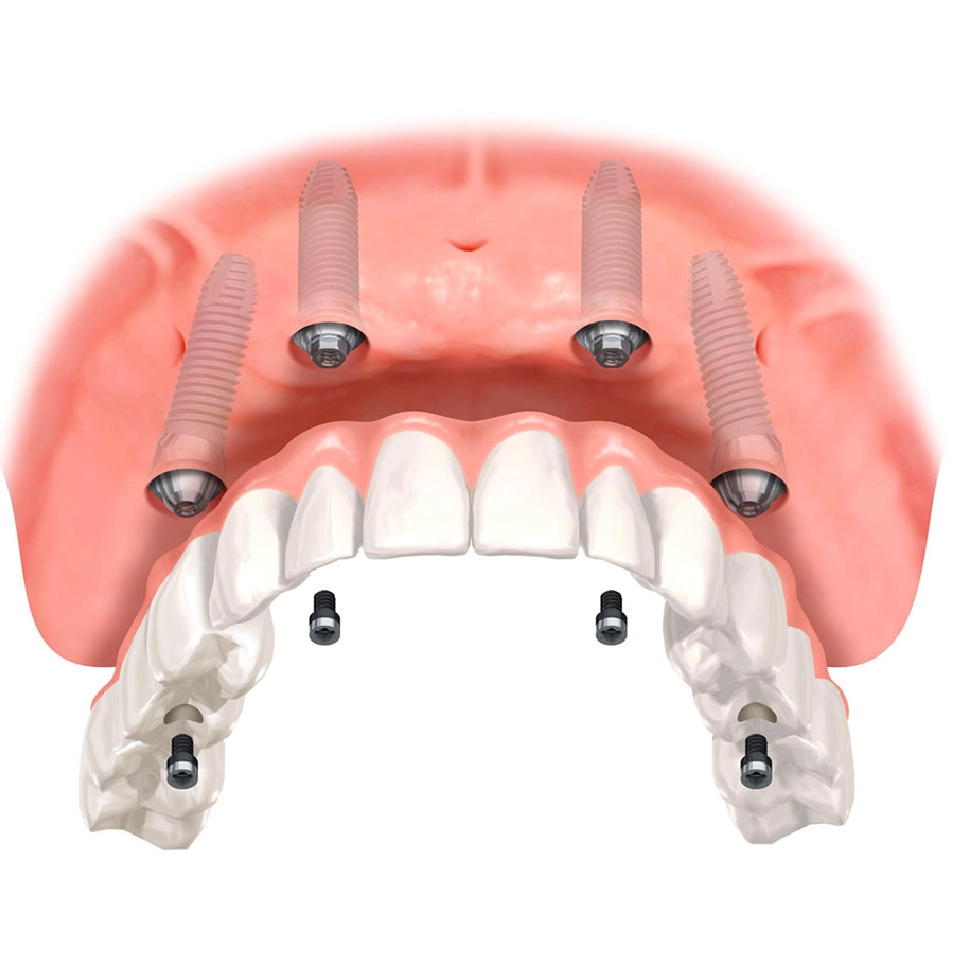Dental Implantology
Overview
What is Implantology?
Implantology is a discipline dedicated to dental implants. Dental implants are made of biocompatible titanium and are surgically placed in your jaw to serve as a base for replacement teeth. These remarkable implants provide a permanent and natural-looking solution for missing teeth, ensuring you can once again have a full, functional smile.
Types of Implantology
Modern Implantology
Implantology is the most modern method to replace lost teeth, restoring a natural and healthy smile, as well as self-confidence, often within 24 hours. The dental implant consists of a titanium screw, a completely biocompatible material, which allows it to integrate perfectly with the bone, acting as a root similar to a natural one, on which a crown or bridge can be placed if several teeth are missing.
Our clinic uses high-quality dental implants with reliable guarantees (Megagen, Straumann, Schutz, Ankylos Dentsply). Their surface is treated with special compounds to accelerate and facilitate the process of osseointegration. The placement of dental implants is a simple, quick, and painless surgical procedure, during which the patient is fully relaxed due to conscious intravenous sedation.
Computer-Guided Implantology
Computer-guided implantology is the most advanced method in modern implantology. After collecting data from the CBCT 3D scanner, the placement of the implants can be simulated on a computer, allowing precise planning of their position and angle for each patient with maximum precision. This method helps prevent clinical and aesthetic problems that often arise from incorrect implant placement. The process involves transferring the computer planning to the patient through the production of surgical guides, also known as 'guides'.
The advantages of this technique are:
Minimal invasion
No scalpel is used, there is no need for mucosal opening or suturing. This avoids swelling, pain, and bleeding.
Accurate control of implant position
This aspect is particularly important when implant positioning needs to be precise, such as in 'All on 4' techniques or cases where there is a lack of bone, and the implants must be placed in specific positions to avoid nearby anatomical structures.
Immediate Loading Implantology
In the early stages of implantology, after placing the screw in the bone, it was necessary to wait 3-4 months before placing the crown, a time required for the osseointegration of the implant with the bone. Today, with advances in dentistry, surgery, and technology, it is possible in many cases to place a temporary crown immediately on the newly placed implant.
Immediate loading can be used for a single implant when replacing a tooth or for 4, 6, or 8 implants when replacing all teeth in a jaw. The immediate load prosthesis is a fixed temporary prosthesis that rests directly on the implants and not on the soft tissues. Prostheses that rest on soft tissues can cause discomfort, such as movement, sores, and risk the implant integration process due to inappropriate forces.
The immediate load technique can only be applied to patients who have suitable bone quality and quantity, and when implant stability is above 35 N/cm. The surgeon, after analyzing the bone through a three-dimensional scanner, can determine if you are a suitable candidate for this procedure.
Full Arch Replacement
With dental implants, all teeth can be replaced in cases of total loss, eliminating the concern of dentures moving during eating or speaking with others.
To replace a full arch with fixed teeth, a minimum of four dental implants is required, hence the technique's name 'All on 4'. However, the more implants placed in a jaw, the better forces are distributed during chewing, increasing their stability and longevity, and reducing the risk of overloading an implant.
All on 4
This method involves placing four dental implants and fixing a permanent prosthesis on them. It is usually applied in the lower jaw, especially when the patient does not have enough bone to place six implants. In these cases, the last two implants are positioned at a slanted angle, avoiding important anatomical structures like the mandibular nerve and the maxillary sinus. The technique is not very suitable for the upper jaw due to bone fragility, which increases the risk of complications.
All on 6
In this technique, the fixed prosthesis is supported on six implants, which is considered the highest standard in implantology. When the bone is in good condition, the surgeon always tries to place at least six implants in a jaw, as this number provides permanent stability for the prosthesis and implants.
With this method, the entire dental arch is replaced with a prosthesis containing 12 to 14 metal-porcelain or zirconium teeth. In cases where bone quality is poor, especially in the upper jaw, the surgeon may increase the number of implants by placing 7 or 8 implants to ensure more stability.
Pterygoid Implants
The pterygoid implant includes three bony structures (the maxillary tuberosity of the maxilla, the pyramidal process of the palatine bone, and the pterygoid process of the sphenoid bone), which are located at the very back of the upper jaw. These bones are more stable and do not undergo resorption as occurs with jawbone, making this area an ideal option for placing a dental implant in patients who have lost bone in the upper jaw.
Moreover, pterygoid implants are particularly stable and longer than traditional implants, reaching lengths of 15 to 25 mm, which ensures precise and secure placement in the bone.
To achieve long-term osseointegration and functioning, an implant requires primary and secondary stability, achieved by engaging the dense cortex of the bone.
Zygomatic Implants
Zygomatic implants are a specific method used to treat patients who have lost a significant amount of bone. These implants are longer and placed at a steeper angle compared to traditional dental implants. Instead of being placed in the jawbone, zygomatic implants are positioned in the cheekbone (zygoma), which is very strong and provides stable, long-term support for the implants.
Results
We provide transformative results through implantology, restoring smiles with natural-looking teeth, preventing bone loss, and improving overall oral health.
Learn More About Our Staff





